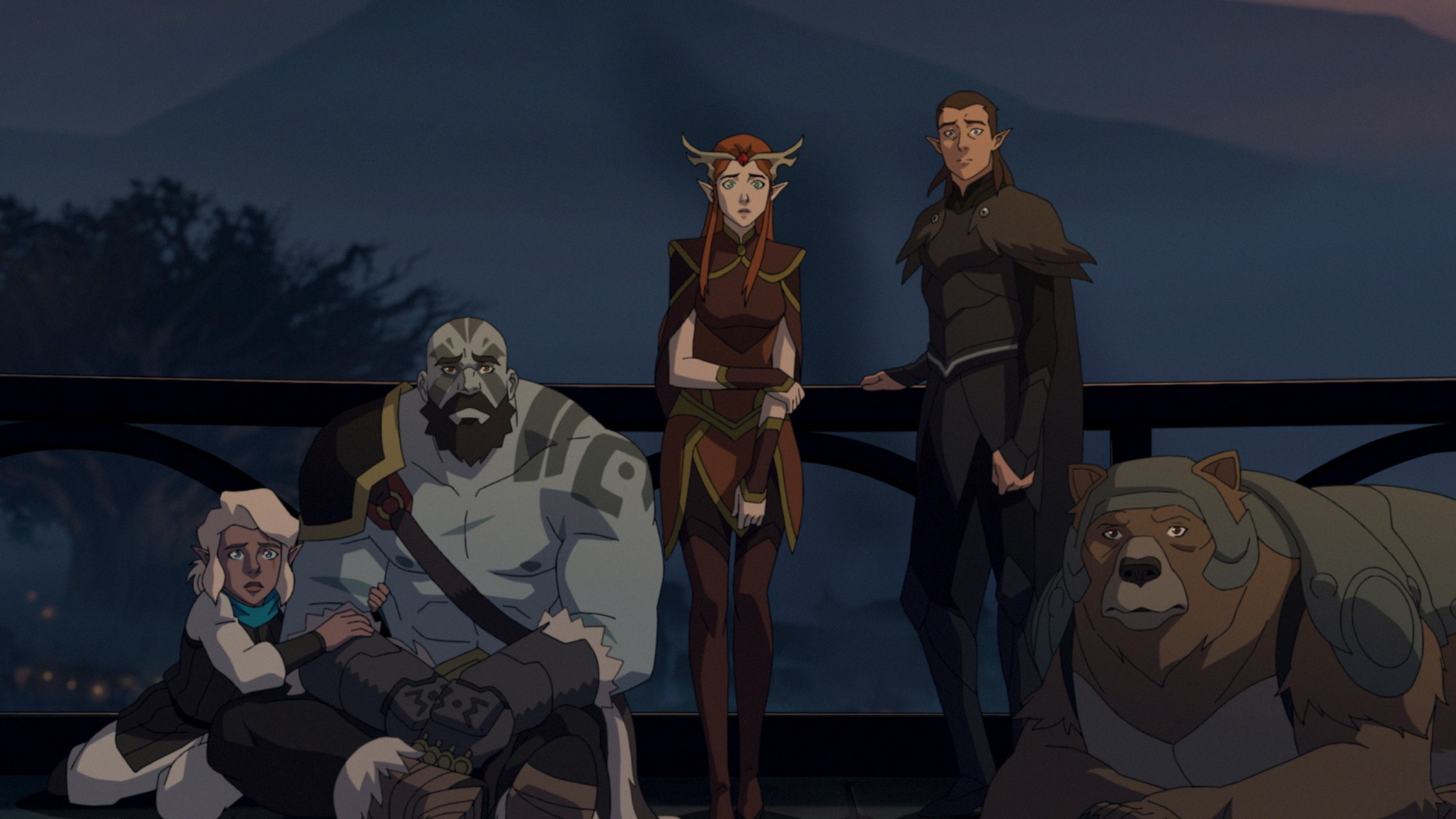As The Legend of Vox Machina goes on, the show tackles more and more, pulling in not just from the original Critical Role campaign but from subsequent actual play sessions and the whole world of Exandria that’s since been built out.
And yet, even with the stakes at an all-time high, the creative team behind The Legend of Vox Machina never loses sight of what actually makes the show special: not the combat or even the world-building, but the characters and their relationships. The result isn’t just an epic fantasy show with a grand scope, but one that homes in on the intimate personal stakes.
[Ed. note: This review contains spoilers for The Legend of Vox Machina season 3.]
The third season of The Legend of Vox Machina picks up right where the last one left off: Raishan (Cree Summer), one of the dragons in the group bent on taking over the world, reaches out to the adventuring party and offers them intel on a magical item that could stop the tyrannical dragon leader.
But, predictably, the adventurers of Vox Machina have a lot going on in this season, and not just when it comes to defeating the big bad dragon. Bard Scanlan (Sam Riegel), for instance, wishes to repair the relationship he has with his estranged daughter. Druid Keyleth (Marisha Ray) and rogue Vax (Liam O’Brien) dance around a romantic relationship while facing their own internal battles, as do Vex (Laura Bailey) and Percy (Taliesin Jaffe). Pike (Ashley Johnson) grapples with her faith, and barbarian Grog (Travis Willingham)… well, Grog’s actually pretty peachy this season. There’s world and lore to expand and minor character backstories to flesh out, and still, even with all of that in 12 half-hour episodes, the show doesn’t actually feel like it’s taking on too much.
It’s because the creators know when to slow down. Improvised banter is built into the original campaign, but it proves to be a valuable asset in figuring out when to let the emotional beats sit for a moment. The characters may be facing increasing stakes and bigger foes, but they’re also feeling the effects of those things.
For the audience, this is incredibly valuable. These days, a lot of high-stakes shows don’t bother to really drill in on the downtime or the moments between big world-ending plot points. Eight hour-long episodes go by in a breathless blur. But The Legend of Vox Machina checks in with the characters, how they’re feeling about themselves, their mission, and each other. Even with everything happening, they’re not on all the time. There’s a whole bit where they take a moment to rest and recover in Scanlan’s fabulous dream mansion, for instance, and it’s a chance for them to hit pause and reflect. And some of the best decisions the creative team makes are in integrating more of these moments that weren’t in the original campaign.
Case in point: Percy’s death. In the tabletop session, he was dead for a bit, but quickly revived. And for a D&D game with friends, that makes sense, since you want to keep the game going. But for a television show, having an easy resurrection would turn a big consequential moment into just a handwave. Dr. Anna Ripley (Kelly Hu) would be easy to dismiss as a threat, and there wouldn’t be a chance for the rest of the characters to reflect. Ultimately, Percy does come back (in a different way, with new ramifications), but turning it into a few-episode-long arc really just emphasizes the personal stakes in a way that this show does very well.
The writers and directors have a daunting task with this show: Adapt hours and hours (and hours) of actual play into 12 half-hour episodes. The fact that they’ve so smartly zeroed in on what’s important to the characters and the story is impressive, as is the fact that they know when to change those beats and make them fit within the structure of television. Letting Percy’s death sit longer allows for the other characters — particularly Vex — to really reexamine their own priorities, while also heightening the fact that characters can and will die if they don’t defeat the big bad.
It’s not that The Legend of Vox Machina has more episodes or run time to fill these emotional beats in than other fantasy shows; it’s that the creators know to give them just as much weight as the epic battles and big villain showdowns. The action sequences are certainly fun and intense, but they’re not dragged on or given more precedence than quiet moments watching a sunrise. The allure of Critical Role has always been the characters (and the actors behind them), and that focus on the small stakes as well as the large ones is what levels up The Legend of Vox Machina. And in the third season, when so much is happening, yet there’s still space for that muchness to breathe, it’s more evident than ever that this show is something special.


